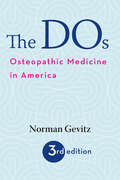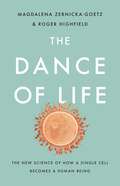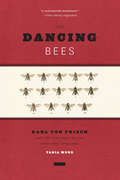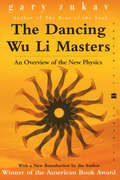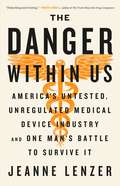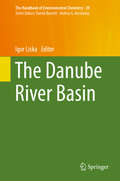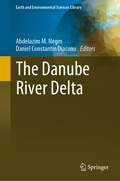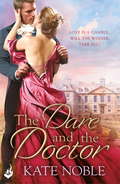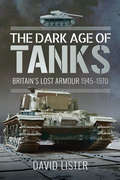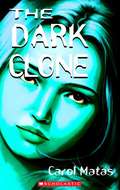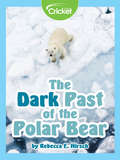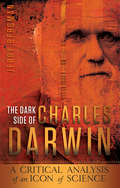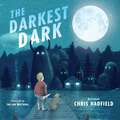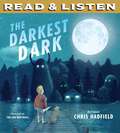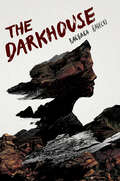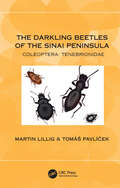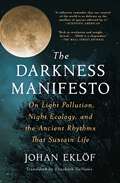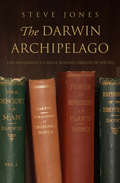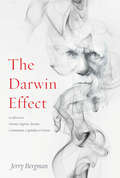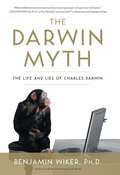- Table View
- List View
The DOs: Osteopathic Medicine in America
by Norman GevitzA comprehensive portrait of the osteopathic medical profession.Overcoming suspicion, ridicule, and outright opposition from the American Medical Association, the osteopathic medical profession today serves the health needs of more than thirty million Americans. Osteopathic medicine is now the fastest-growing segment of the US physician and surgeon population. In The DOs, historian Norman Gevitz chronicles the development of this controversial medical movement from its nineteenth-century origins in the American Midwest to the present day. He describes the philosophy and practice of osteopathy, as well as the impact of osteopathic medicine on health care.In print continuously since 1982, The DOs has now been thoroughly updated and expanded. From the theories underlying the use of spinal manipulation developed by osteopathy's founder, Andrew Taylor Still, Gevitz traces the movement's early success, despite attacks from the orthodox medical community. He also recounts the efforts of osteopathic medical colleges to achieve parity with institutions granting MD degrees and looks at the continuing effort by osteopathic physicians and surgeons to achieve greater recognition and visibility.Bringing additional light to the philosophical origins and practices of the osteopathic movement, as well as the historic debates about which degree to offer its graduates, this volume • chronicles the challenges the profession has faced in the early decades of the twenty-first century • addresses recent challenges to the osteopathic medical profession• explores efforts at preserving osteopathy's autonomy and distinctiveness• offers a new perspective on the future of osteopathic medicine Based on an extensive examination and evaluation of primary sources, as well as countless interviews with individuals both inside and outside osteopathic medicine, The DOs is the definitive history of the osteopathic medical profession.
The DV-Xα Molecular-Orbital Calculation Method
by Tomohiko Ishii Hisanobu Wakita Kazuyoshi Ogasawara Yang-Soo KimThis multi-author contributed volume contains chapters featuring the development of the DV-Xα method and its application to a variety of problems in Materials Science and Spectroscopy written by leaders of the respective fields. The volume contains a Foreword written by the Chairs of Japanese and Korea DV-X alpha Societies. This book is aimed at individuals working in Quantum Chemistry.
The Dance of Life: The New Science of How a Single Cell Becomes a Human Being
by Roger Highfield Magdalena Zernicka-GoetzA renowned biologist's cutting-edge and unconventional examination of human reproduction and embryo research Scientists have long struggled to make pregnancy easier, safer, and more successful. In The Dance of Life, developmental and stem-cell biologist Magdalena Zernicka-Goetz takes us to the front lines of efforts to understand the creation of a human life. She has spent two decades unraveling the mysteries of development, as a simple fertilized egg becomes a complex human being of forty trillion cells. Zernicka-Goetz's work is both incredibly practical and astonishingly vast: her groundbreaking experiments with mouse, human, and artificial embryo models give hope to how more women can sustain viable pregnancies. Set at the intersection of science's greatest powers and humanity's greatest concern, The Dance of Life is a revelatory account of the future of fertility -- and life itself.
The Dancing Bees: Karl von Frisch and the Discovery of the Honeybee Language
by Tania MunzWe think of bees as being among the busiest workers in the garden, admiring them for their productivity. But amid their buzzing, they are also great communicators--and unusual dancers. As Karl von Frisch (1886-1982) discovered during World War II, bees communicate the location of food sources to each other through complex circle and waggle dances. For centuries, beekeepers had observed these curious movements in hives, and others had speculated about the possibility of a bee language used to manage the work of the hive. But it took von Frisch to determine that the bees' dances communicated precise information about the distance and direction of food sources. As Tania Munz shows in this exploration of von Frisch's life and research, this important discovery came amid the tense circumstances of the Third Reich. The Dancing Bees draws on previously unexplored archival sources in order to reveal von Frisch's full story, including how the Nazi government in 1940 determined that he was one-quarter Jewish, revoked his teaching privileges, and sought to prevent him from working altogether until circumstances intervened. In the 1940s, bee populations throughout Europe were facing the devastating effects of a plague (just as they are today), and because the bees were essential to the pollination of crops, von Frisch's research was deemed critical to maintaining the food supply of a nation at war. The bees, as von Frisch put it years later, saved his life. Munz not only explores von Frisch's complicated career in the Third Reich, she looks closely at the legacy of his work and the later debates about the significance of the bee language and the science of animal communication. This first in-depth biography of von Frisch paints a complex and nuanced portrait of a scientist at work under Nazi rule. The Dancing Bees will be welcomed by anyone seeking to better understand not only this chapter of the history of science but also the peculiar waggles of our garden visitors.
The Dancing Universe: From Creation Myths to the Big Bang
by Marcelo GleiserMarcelo Gleiser refutes the notion that science and spirituality are irreconcilable. In The Dancing Universe, he traces mystical, philosophical, and scientific ideas about the cosmos through the past twenty-five centuries, from the ancient creation myths of numerous cultures to contemporary theories about an ever-expanding universe. He also explores the lives and ideas of history's greatest scientists, including Copernicus, Galileo, Kepler, Newton, and Einstein. By exploring how scientists have unlocked the secrets of gravity, matter, time, and space, Gleiser offers fresh perspective on the debate between science and faith.
The Dancing Wu Li Masters
by Gary ZukavWith its unique combination of depth, clarity, and humor that has enchanted millions, this beloved classic by bestselling author Gary Zukav opens the fascinating world of quantum physics to readers with no mathematical or technical background. "Wu Li" is the Chinese phrase for physics. It means "patterns of organic energy," but it also means "nonsense," "my way," "I clutch my ideas," and "enlightenment." These captivating ideas frame Zukav's evocative exploration of quantum mechanics and relativity theory. Delightfully easy to read, The Dancing Wu Li Masters illuminates the compelling powers at the core of all we know.
The Danger Within Us: America's Untested, Unregulated Medical Device Industry and One Man's Battle to Survive It
by Jeanne Lenzer"Before you get anything implanted in your body, read this book." - Shannon Brownlee, author of OvertreatedDid you know...- Medical interventions have become the third leading cause of death in America.- An estimated 10 percent of Americans are implanted with medical devices -- like pacemakers, artificial hips, cardiac stents, etc.- The overwhelming majority of high-risk implanted devices have never undergone a single clinical trial. In THE DANGER WITHIN US, award-winning journalist Jeanne Lenzer brings these horrifying statistics to life through the story of one working class man who, after his "cure" nearly kills him, ends up in a battle for justice against the medical establishment. His crusade leads Lenzer on a journey through the dark underbelly of the medical device industry, a fascinating and disturbing world that hasn't been written about before. What Lenzer exposes will shock readers: rampant corruption, elaborate cover-ups, shameless profiteering, and astonishing lack of oversight, all of which leads to dangerous devices (from artificial hips to pacemakers) going to market and into our bodies. In the vein of America's Bitter Pill and A Civil Action, THE DANGER WITHIN US is a stirring call for reform and a must-read for anyone who cares about the future of American healthcare. span
The Danube River Basin
by Igor LiskaThis volume offers a comprehensive review of the chemical, biological and hydromorphological quality of the Danube. The first part examines the chemical pollution of surface waters, focusing on organic compounds (with special emphasis given to EU WFD priority substances and Danube River Basin specific pollutants), heavy metals and nutrients. Attention is also given to pollution of groundwater and drinking water resources by hazardous substances and to radioactivity in the Danube. The second part highlights the biology and hydromorphology of the Danube. It focuses on benthic macroinvertebrates, phytobenthos, macrophytes, fish, phytoplankton as well as microbiology, with chapters dedicated to gaps and uncertainties in the ecological status assessment and to invasive alien species. Further chapters dealing with the hydromorphology, sediment management and isotope hydrology complete the overall picture of the status of the Danube.
The Danube River Basin (The Handbook of Environmental Chemistry #39)
by Igor LiskaThis volume offers a comprehensive review of the chemical, biological and hydromorphological quality of the Danube. The first part examines the chemical pollution of surface waters, focusing on organic compounds (with special emphasis given to EU WFD priority substances and Danube River Basin specific pollutants), heavy metals and nutrients. Attention is also given to pollution of groundwater and drinking water resources by hazardous substances and to radioactivity in the Danube. The second part highlights the biology and hydromorphology of the Danube. It focuses on benthic macroinvertebrates, phytobenthos, macrophytes, fish, phytoplankton as well as microbiology, with chapters dedicated to gaps and uncertainties in the ecological status assessment and to invasive alien species. Further chapters dealing with the hydromorphology, sediment management and isotope hydrology complete the overall picture of the status of the Danube.
The Danube River Delta (Earth and Environmental Sciences Library)
by Abdelazim M. Negm Daniel Constantin DiaconuThis unique book presents for the first time the current status of the Danube River Delta, the challenges facing it, and proposed strategies to solve it. One of the biggest challenges is the human effects on the Danube Delta Environment and its lakes that work as sinks for natural and anthropogenic environmental changes, the water management and water flow variability and under climatic conditions including the extreme temperature and precipitation events based on RCMs output and the impact of sedimentation processes on the evolution of the Danube Delta. The book also contains the impact of wind and solar energy on the Delta. The book also presents the integrated approach for sustainable development of the Delta including the structural dynamics of the local economy, the role of tourism activities, integrated waste management in the Danube Delta Biosphere Reserve, demographic dynamics in the Delta, and the population health state. Also, a unique chapter on the opportunities of content exploitation as Language Learning Experiences is applied to Danube Delta. The book will be of great scientific interest to help the graduate students, researchers, stakeholder professional engineers, policy planners, policymakers of three countries to implement their sustainable development plan.
The Dappled World
by Nancy CartwrightIn this book Nancy Cartwright argues against a vision of a uniform world completely ordered under a single elegant theory, and proposes instead a patchwork of laws of nature. Combining classic and newly written essays, The Dappled World offers important methodological lessons for both the natural and the social sciences, and will interest anyone who wants to understand how modern science works.
The Dare and the Doctor: Winner Takes All 3 (Winner Takes All)
by Kate NobleFrom Kate Noble, part of the sensational writing team behind The Lizzie Bennet Diaries, comes the third novel in a dazzling and superbly witty historical romance series that's part Trading Places, part Pride and Prejudice. Perfect for fans of Julia Quinn, Stephanie Laurens and Tessa Dare.The best of friends might be the perfect match . . . What's the worst that can happen?Margaret Babcock had always been content with her quiet life in the country. But with her late mother's words 'What's the worst that could happen?' ringing in her ears, she longs to spread her wings. So when her long-time correspondent Dr Rhys Gray invites her to London, she eagerly accepts.Many happy hours are spent touring the wonders of the city - purely as friends, of course. But would friends miss each other so fiercely when they're apart? Or feel such a spark together? And matters are complicated even further when it transpires that Rhys may be promised to another. Will their 'friendship' survive?Be dazzled by Kate Noble's previous Winner Takes All books: The Game and the Governess and The Lie and the Lady.
The Dark Age of Tanks: Britain's Lost Armour, 1945–1970
by David ListerA British tank historian sheds new light on the UK’s Cold War era research and development of cutting-edge military vehicles and anti-tank weaponry.In the thirty years after the Second World War, the British army entered a period of intense technological development. Yet, due to the lack of surviving documentation, comparatively little is known about this period. What does survive, however, reveals the British Army’s struggle to use cutting edge technology to create weapons that could crush the Soviet Union's armed forces, all the while fighting against the demands of Her Majesty's Treasury.On this journey, the Army entertained ideas such as massive 183mm anti-tank guns, devastating rocket artillery, colossal anti-tank guided missiles, and micro-tanks operable by crews of only two. At one point, they were on the cusp of building hover tanks. This book explores a time period of increasing importance in military engineering history and brings much-needed light to the dark age of British tanks.
The Dark Clone (Cloning Miranda #3)
by Carol MatasThe thrilling sequel to Cloning Miranda and The Second Clone. When Miranda is accused of vandalism on school property, she's confident she can clear her name - until she's shown the security tapes.
The Dark Past of the Polar Bear
by Rebecca E. HirschPolar bears rule the frozen sea, but their ancestors weren't always built for ice and snow.
The Dark Side of Charles Darwin: A Critical Analysis of an Icon of Science
by Dr Jerry BergmanA single man stands behind the greatest deception in history. Charles Darwin's ideas still penetrate every aspect of our culture, including science, religion, and education. And while much has been made of his contribution to the evolutionary hypothesis, little has been publicized about the dark side of the man himself and how this may have impacted the quality and legitimacy of his research. This daring and compelling book takes its readers behind the popular facade of a man revered worldwide as a scientific pioneer, and unveils what kind of person Darwin really was. The book reveals disturbing facts that will help you: Perceive Darwin firsthand through the eyes of family and friends, and his own correspondence Discern this darkly troubled man, struggling with physical and mental health issues Uncover his views on eugenics and racism, and his belief that women were less evolved than men Thoroughly documented, this book reveals Darwin's less-than-above board methods of attempting to prove his so-called scientific beliefs, and his plot to "murder God" by challenging the then-dominant biblical worldview.
The Darker the Night, the Brighter the Stars: A Neuropsychologist's Odyssey Through Consciousness
by Paul BroksWhen celebrated neuropsychologist Paul Broks's wife died of cancer, it sparked a journey of grief and reflection that traced a lifelong attempt to understand how the brain gives rise to the soul. The result of that journey is a gorgeous, evocative meditation on fate, death, consciousness, and what it means to be human. The Darker the Night, The Brighter the Stars weaves a scientist’s understanding of the mind – its logic, its nuance, how we think about what makes a person – with a poet’s approach to humanity, that crucial and ever-elusive why. It’s a story that unfolds through the centuries, along the path of humankind’s constant quest to discover what makes us human, and the answers that consistently slip out of our grasp. It’s modern medicine and psychology and ancient tales; history and myth combined; fiction and the stranger truth. But, most importantly, it’s Broks’ story, grounded in his own most fascinating cases as a clinician—patients with brain injuries that revealed something fundamental about the link between the raw stuff of our bodies and brains and the ineffable selves we take for who we are. Tracing a loose arc of loss, acceptance, and renewal, he unfolds striking, imaginative stories of everything from Schopenhauer to the Greek philosophers to jazz guitarist Pat Martino in order to sketch a multifaceted view of humanness that is as heartbreaking at it is affirming.
The Darkest Dark
by Chris Hadfield Kate FillionInspired by the childhood of real-life astronaut Chris Hadfield and brought to life by Terry and Eric Fan's lush, evocative illustrations, The Darkest Dark will encourage readers to dream the impossible. Chris loves rockets and planets and pretending he's a brave astronaut, exploring the universe. Only one problem--at night, Chris doesn't feel so brave. He's afraid of the dark. But when he watches the groundbreaking moon landing on TV, he realizes that space is the darkest dark there is--and the dark is beautiful and exciting, especially when you have big dreams to keep you company.
The Darkest Dark: Read & Listen Edition
by Chris Hadfield Kate FillionInspired by the childhood of real-life astronaut Chris Hadfield and brought to life by Terry and Eric Fan's lush, evocative illustrations, The Darkest Dark will encourage readers to dream the impossible. Chris loves rockets and planets and pretending he's a brave astronaut, exploring the universe. Only one problem--at night, Chris doesn't feel so brave. He's afraid of the dark. But when he watches the groundbreaking moon landing on TV, he realizes that space is the darkest dark there is--and the dark is beautiful and exciting, especially when you have big dreams to keep you company.
The Darkhouse
by Barbara RadeckiFifteen-year-old Gemma’s life on a small New Brunswick island with her father, Jonah, is not an exciting one. Her mother ran off when she was an infant, and Jonah, an amateur scientist, spends most of his time conducting experiments he thinks will one day bring him fame. But when a woman arrives on the island, Gemma tries to play matchmaker – only to discover Jonah’s hidden journals, which hold terrifying secrets about both their lives. Mystery, science, and dreams of a better life collide in this page-turning young adult novel from Barbara Radecki.
The Darkling Beetles of the Sinai Peninsula: Coleoptera: Tenebrionidae
by Martin Lillig Tomáš PavlíčekAn expanded and updated edition of the out-of-print 2003 supplementum of Zoology in the Middle East, this concise guide to Darkling Beetles of the Sinai Peninsula has been sought after by researchers in taxonomy, faunistics and biogeography. The new book includes two additional subfamilies of tenebrionid beetles (4-5 species), identification keys and more than 90 colour photographs and species distribution maps. Zoogeographically speaking, the Sinai Peninsula is a crossroad and, at the same time, a center of speciation. Despite its generally arid character, the region harbours a wide range of habitats, from sea level to over 2,500 m above. About 10 percent of the Sinai darkling beetles are endemic to the area. The inclusion of species photographs and identification keys makes this book an invaluable reference field guide, for both specialists and non-specialists, who will thus be able to discover the taxonomic and phylogenetic diversity of darkling beetles in the Sinai Peninsula.
The Darkness Manifesto: On Light Pollution, Night Ecology, and the Ancient Rhythms that Sustain Life
by Johan EklöfIn the bestselling tradition of Why We Sleep and The Sixth Extinction, an urgent and insightful look at the hidden impact of light pollution, and a passionate appeal to cherish natural darkness for the sake of the environment, our own well-being, and all life on earth.How much light is too much light? Satellite pictures show our planet as a brightly glowing orb, and in our era of constant illumination, light pollution has become a major issue. The world&’s flora and fauna have evolved to operate in the natural cycle of day and night. But in the last 150 years, we have extended our day—and in doing so have forced out the inhabitants of the night and disrupted the circadian rhythms necessary to sustain all living things, including ourselves. In this persuasive, well-researched book, Swedish conservationist Johan Eklöf urges us to appreciate natural darkness, its creatures, and its unique benefits. Eklöf ponders the beauties of the night sky, traces the errant paths of light-drunk moths and the swift dives of keen-eyed owls, and shows us the bioluminescent creatures of the deepest oceans. As a devoted friend of the night, he writes passionately about the startling damage we inflict on ourselves and our fellow creatures simply by keeping the lights on. The Darkness Manifesto depicts the domino effect of diminishing darkness: insects, dumbfounded by streetlamps, failing to reproduce; birds blinded and bewildered by artificial lights; and bats starving as they wait in vain for food insects that only come out in the dark of night. For humans, light-induced sleep disturbances impact our hormones and weight, and can contribute to mental health problems like chronic stress and depression. The streetlamps, floodlights, and neon signs of cities are altering entire ecosystems, and scientists are only just beginning to understand the long-term effects. The light bulb—long the symbol of progress and development—needs to be turned off. Educational, eye-opening, and ultimately encouraging, The Darkness Manifesto outlines simple steps that we can take to benefit ourselves and the planet. In order to ensure a bright future, we must embrace the darkness.
The Darwin Archipelago
by Steve JonesCharles Darwin is of course best known for The Voyage of the Beagle and The Origin of Species. But he produced many other books over his long career, exploring specific aspects of the theory of evolution by natural selection in greater depth. The eminent evolutionary biologist Steve Jones uses these lesser-known works as springboards to examine how their essential ideas have generated whole fields of modern biology. Earthwormshelped found modern soil science,Expression of the Emotionshelped found comparative psychology, andSelf-FertilizationandForms of Flowerswere important early works on the origin of sex. Through this delightful introduction to Darwin's oeuvre, one begins to see Darwin's role in biology as resembling Einstein's in physics: he didn't have one brilliant idea but many and in fact made some seminal contribution to practically every field of evolutionary study. Though these lesser-known works may seem disconnected, Jones points out that they all share a common theme: the power of small means over time to produce gigantic ends. Called a "world of wonders" by theTimesof London,The Darwin Archipelagowill expand any reader's view of Darwin's genius and will demonstrate how all of biology, like life itself, descends from a common ancestor.
The Darwin Effect
by Dr Jerry BergmanDr. Miklos Nyiszli, an imprisoned doctor in the Auschwitz camp, wrote that Nazi doctors hoped studying twins would solve the problem of faster reproduction of superior races. Nazis hoped to have each German mother bear as many twins as possible.What Darwin influenced went far beyond the Nazi death camps: Shocking political, social, and scientific legacies of Darwin and his family Disturbing disclosure of how over 45 million Christians were killed in the 20th century because of their faith Revealing and layman-friendly presentation. This book is the result of 30 years of research and study carefully documenting the common destructive threads that tie some of history's most murderous dictators, uncaring capitalists, and aggressive social activists to the flawed concepts of Charles Darwin in an effort to change the world -- and how they succeeded. The extermination of races considered "lower" than others, the profound lack of empathy for less-advanced cultures, the corrupted atheistic justifications for taking the lives of millions -- all done to advance the agendas of social Darwinism at work in the world today. More than mere theoretical discussions, we have seen the horrifying evidence of the practical results when applying these destructive and misleading concepts to society in the last 100 years!
The Darwin Myth: The Life and Lies Charles Darwin
by Benjamin WikerIn The Darwin Myth, author Benjamin Wiker offers a critical analysis of Darwin's theories as well as the social, scientific, and religious implications of his work, leading us to the inevitable truth about Darwin's powerful - yet ultimately poisonous - legacy. Scientists often challenge conventional wisdom and spark debates that last for generations. But no scientist has fuelled more debate than Charles Darwin.To some he is the revolutionary 'father' of evolution. To others he is the perverse 'originator' of modern eugenics. And in The Darwin Myth: The Life and Lies of Charles Darwin, author Benjamin Wiker brings these conflicting identities to light. He offers a critical examination of Darwin's theories as well as the scientific, social, and religious implications of his life and work. In The Darwin Myth, Wiker reveals: How Darwin's theories were originally met by scepticism and criticism - much of which he couldn't refute and are still valid today; why Darwin didn't 'discover' evolution; and how science itself suggests God created the universe. Laying out the evidence and sound scientific arguments, Wiker illuminates the inevitable truth about Darwin's powerful - yet ultimately poisonous - legacy.
